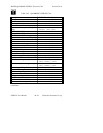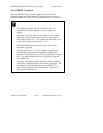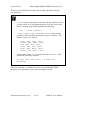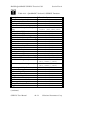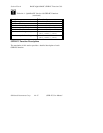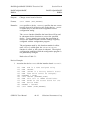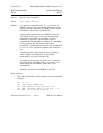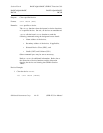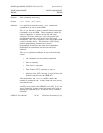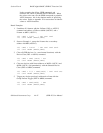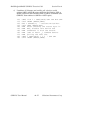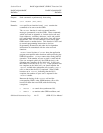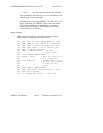
Section Four A BASICA/QuickBASIC GPIB-PC Function Calls
©National Instruments Corp. 4A-17 GPIB-PC User Manual
BASICA/QuickBASIC BASICA/QuickBASIC
IBCAC IBCAC
Purpose: Become Active Controller
Format: CALL IBCAC (BD%,V%)
Remarks: BD% specifies an interface board. If V% is non-zero, the
GPIB-PC takes control synchronously with respect to data
transfer operations; otherwise, the GPIB-PC takes control
immediately (and possibly asynchronously).
To take control synchronously, the GPIB-PC asserts the
ATN signal in such a way as to ensure that data being
transferred on the GPIB is not corrupted. If a data
handshake is in progress, the take control action is
postponed until the handshake is complete; if a handshake
is not in progress, the take control action is done
immediately. Synchronous take control is not guaranteed if
an IBRD or IBWRT operation completed with a timeout or
error.
Asynchronous take control should be used in situations
where it appears to be impossible to gain control
synchronously (e.g., after a timeout error).
It is generally not necessary to use the IBCAC function in
most applications. Functions such as IBCMD and IBRPP,
which require that the GPIB-PC take control, do so
automatically.
The ECIC error results if the GPIB-PC is not CIC.
Board Examples:
1. Take control immediately without regard to any data handshake
in progress.
100 V% = 0
110 CALL IBCAC (BRD0%,V%)
120 REM IBSTA% should show that the
130 REM interface board is now CAC, i.e.,
140 REM CIC with ATN asserted.




